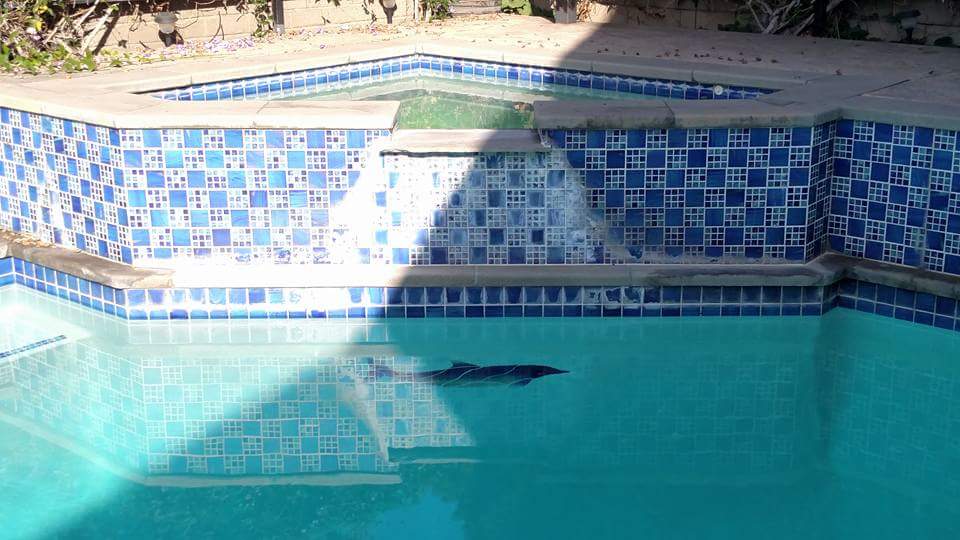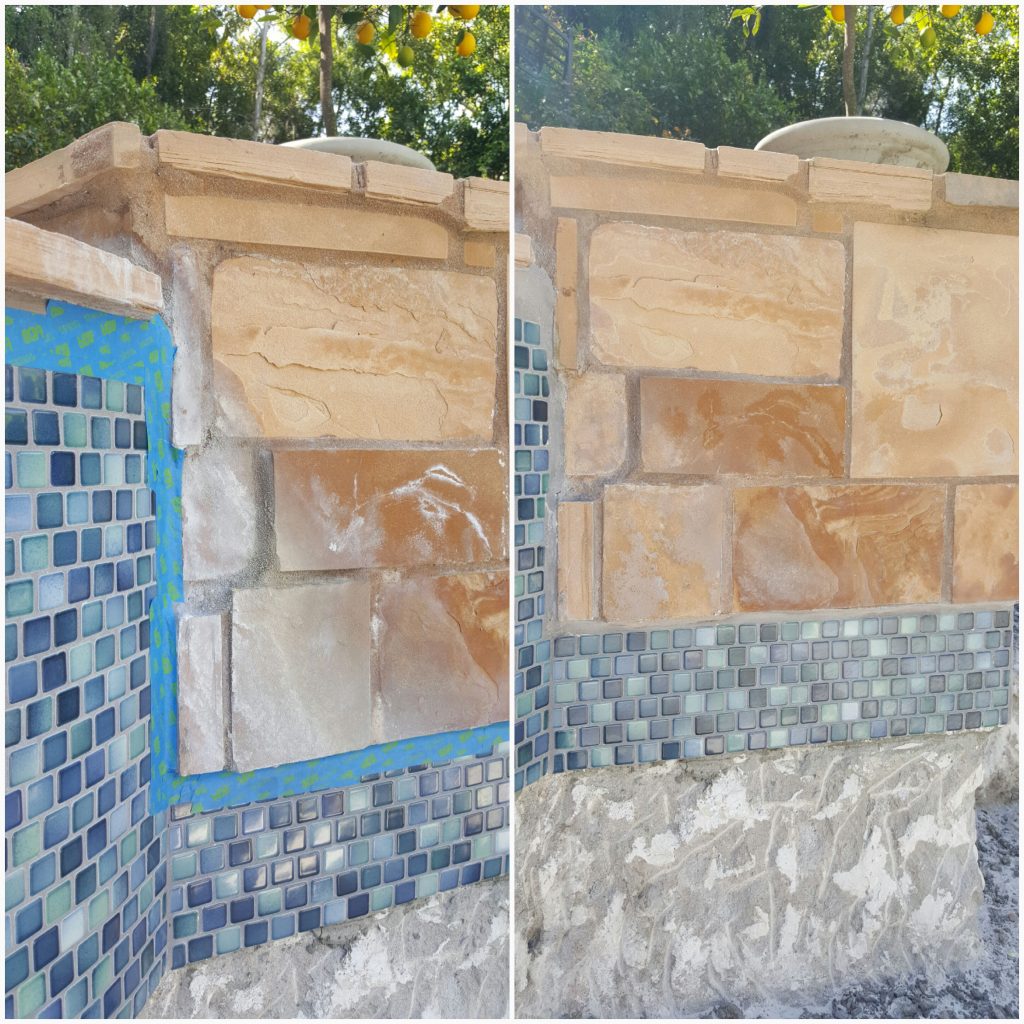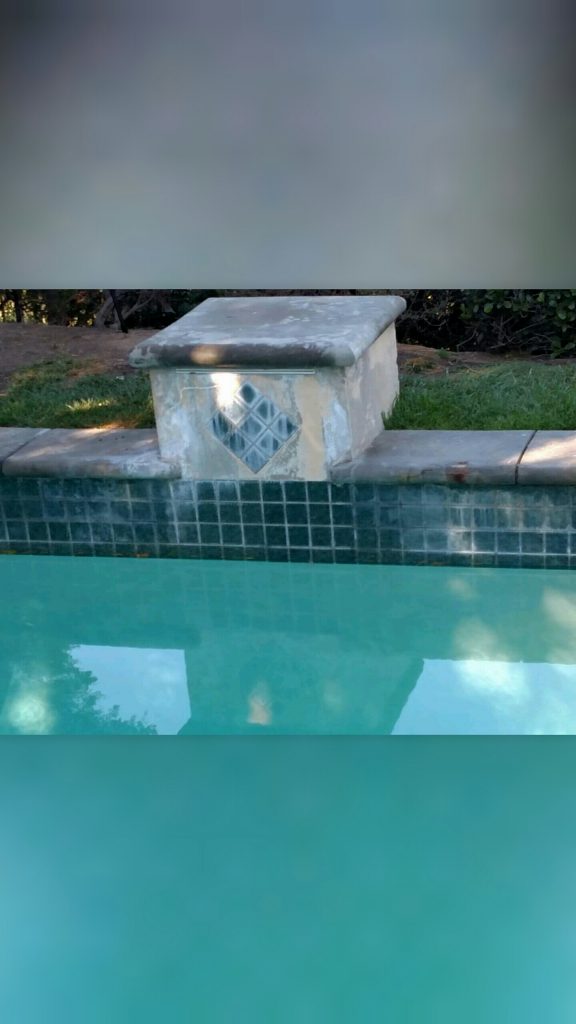When you want to install a salt chlorinator in a pool with well water, we recommend that you empty it and fill it with water from the water supply grid.
What are the drawbacks of well water
The reason is that lime and other minerals often cause problems in the chlorinator electrode.
During electrolysis, lime and other elements precipitate and end up being embedded in the plates of the chlorinator cell.
The performance of the electrode decreases, because the plates are electrically isolated, due to the layer of lime, which acts as an insulator.
To clean the electrode plates, the electrode must be immersed in acid, which also attacks metal.
After many washes, the electrode ends up having serious corrosion problems.
In addition, there are other salts and metals present in well water that cause other problems, both due to the sediments they cause and due to the electrochemical effects that are produced.
Lime stains in the pool
If you have ever noticed, you will have seen that there is a white line on the walls, at the height of the surface. This is caused by lime deposits.

In pools with well water, these lime deposits form in a short time, and if they are not removed, the layer becomes thicker and difficult to clean.
Another problem is the roughness that is noticeable on the walls, when passing the hand the touch is rough.
Over time, this texture favors the accumulation of dirt and makes cleaning more difficult.
In addition, if you apply acid to dilute the lime, you are also diluting the cement in the joints, damaging the lining, until you have to empty the pool to repair it.
How to use well water for the pool
On many occasions, especially in pools installed in rural areas, there is no access to running water, so there is no choice but to use well water to fill the pool.
Well, I have a trick to remove lime from the pool with well water.
Well water treatment
This trick is not for everyone. It is not difficult to apply, but you have to be careful to follow the steps correctly.
If the pool is already affected by the remains of lime, you should lower the pH as much as possible, adding a lot of acid, or liquid pH-.
With a pH lower than 6, the lime will start to thin, but so will the cement joints.
It is VERY IMPORTANT that no one takes a bath during the process. The acidity of the water will be very aggressive for people.
After a few days in this state, empty the pool completely, clean the surfaces well with acid (better to use a specific liquid or pH reducer based on sulfuric acid, because hydrochloric acid or sulfonate emits a lot of vapors).
Finally, you will have to re-grout (apply Borada or seal with cement) all the joints.
As you can see, it is slow and hard work, and it is better to do it out of season, to avoid the effects of heat on the empty pool.
With the pool empty, the next step is filling (you probably already guessed that).
Start filling it by adding shock bleach.
The well water contains a lot of organic matter, is very “alive”, and then the plant matter, such as algae, begin to react to the light of the sun. Water can go bad in a matter of hours. Sometimes the same water is already green. Don’t worry about adding more chlorine than necessary, while no one takes a bath.
How to purify well water
Now comes the secret.
Add flocculant to the water. Yes, it’s that easy, but wait, this is just the beginning.
The flocculant causes all elements other than water to stick together, forming solid “flakes” (flocs) that settle to the bottom of the pool or remain stuck in the sand filter.
Be very careful not to overdo the dose of flocculant, because the sand can stick, and you will have to replace it.

You will have to do sand washes every few hours so that the sediment is expelled.
These remains will include lime, algae, metals, and other elements.
The water will be practically pure. You will also have to help by sweeping the bottom so that the dirt does not stay there.
You can increase the effectiveness by adding a layer of diatomaceous earth, or diatomaceous sand over the filter sand, to retain a greater amount of debris.
Anyway, think that diatomite is difficult to find and somewhat expensive, so it is not necessary to use it unless you want to do a cleaning worthy of an operating room.
Most of it will go down the drain when doing a sand wash, so this is disposable.
The process time will depend on the type of water you are treating, so you will have to experiment and observe.
You can also repeat the process after a few days. However, it is better to do it before adding salt, in salt chlorination systems.
Prevent stains on the pool tile
I am not a fan of adding chemicals to the water, so once the pool is filled with purified water, I would try to avoid adding other products. For that, it is important that the chlorine level and the pH are perfect. There is nothing else to do.
When adding water, after washing, or simply to compensate for evaporation, we must bear in mind that we have also added lime, so we can repeat the process from time to time.
It should be done as a shock treatment. We do not recommend using maintenance flocculant, because it is still a chemical product which in large quantities is unhealthy, as you can see in this post.
If you’ve done enough washes to remove most of the lime, you’ll see that the water is crystal clear and the walls shiny.
Run your hand over the walls periodically, to make sure that the touch is smooth (but not slippery, which would be a sign of algae formation).
If you notice that they become rough, you should lower the pH a little and do another anti-limescale treatment.
Try to have these treatments done on the days that the pool is not used, to avoid exposure to bathers, especially with low pH.

Use of anti-scale products for swimming pools
There are products that keep lime in suspension, so they don’t really remove it, they just keep it from sticking to the walls.
This is an ineffective solution because it forces you to continually add chemical products, with the risks that they entail, and it also does not completely prevent lime from becoming embedded in the chlorinator electrodes.
The flocculant and sand wash trick works better, because you’re actually getting a lot of the lime out of the pool.
Other options to reduce pool limescale
In facilities with intensive use, such as spas and hotels, a tank can be installed to flocculate the water before adding it to the pool. In addition, filters or osmosis systems can be installed, which can purify the water, leaving it almost as if it were distilled.
These systems are not justified in domestic swimming pools, because with good flocculation the water quality is already very good.



